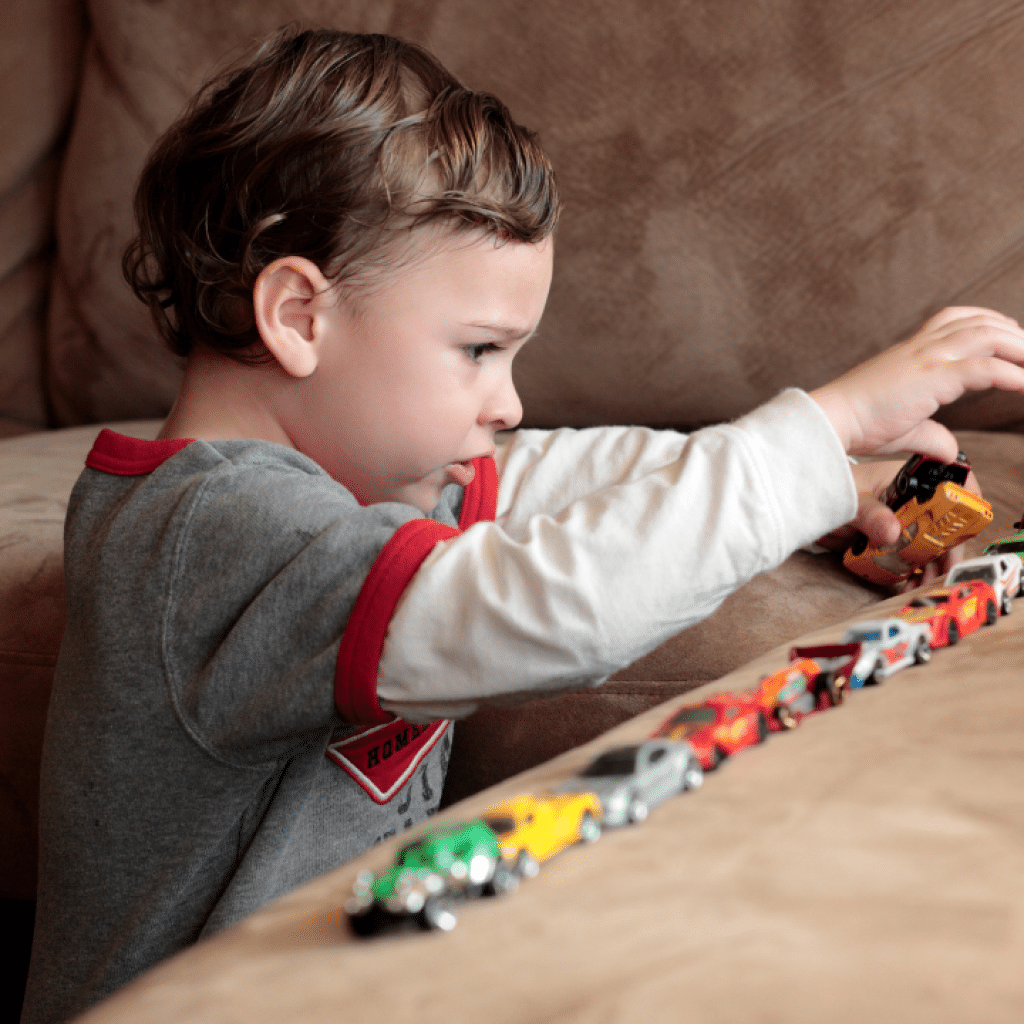Have you ever wondered why your child repeated throws their food on the floor (trajectory schema), puts their toys in a straight line (positioning schema) or pours their water into their cereal bowl (transforming schema)?
Young children’s behaviour can often be perceived as unwanted and ‘naughty’ when in actual fact they are just learning about how the world works. Life is one big science experiment for them!
It’s fascinating!

Schemas are repeated patterns of behaviour.
When a child is practising a schema in their play they are exploring the world around them to see how it works.
Examples of schemas are:
Rotational
Children may like spinning the wheels on a toy car, watching the clothes spin round in the washing machine or roll a ball along the floor.
Enveloping
Children will cover one object with another for example covering a teddy with a blanket or put a toy inside a bag.
Transporting
Moving an object from one place to another.
Trajectory
This one is about movement and often involves throwing! They might throw their food on the floor, or throw a toy across the room. If you notice your child is practising the trajectory schema you could give them something soft like a beanbag to practise throwing with.
Connecting
Children learn how to connect things together like train tracks, building blocks or laying object in a line to make a path.
Orientation
Children might go upside down to see how the world or certain objects look from a different point of view.
So what can you do when you spot a schema?
As parents we can spot these patterns of behaviour through observing our child’s play.
Are they playing with their cars a lot and watching the wheels? (Rotational)
Do they love to throw a ball over and over? (Trajectory)
Do they really enjoy putting things in and out of a bag? (Enveloping)
Think about toys and activities that will help them to explore their interests.
For example if you spot your child is in a rotational schema you could:
- Have toys with wheels available to them such as toy cars and trucks.
- Let your child watch how the washing in the washing machine goes round and round.
- Read books about vehicles with wheels.
- Let your child stir the mixture if you’re cooking or baking (assuming it’s safe for them to do so).
- Sing wheels on the bus or wind the bobbin up whilst doing the actions.
Fun fact: CBeebies Twirlywoos is based on schemas! In this video Professor Cathy Nutbrown, educational consultant on Twirlywoos explains how you can spot a schema.
